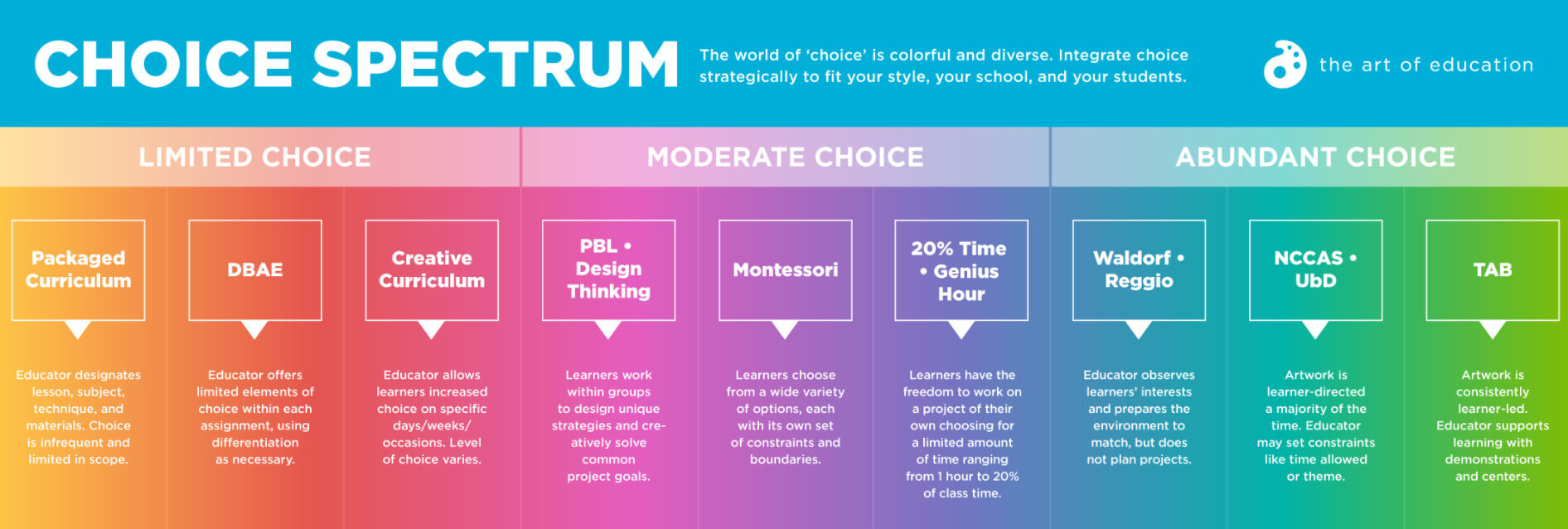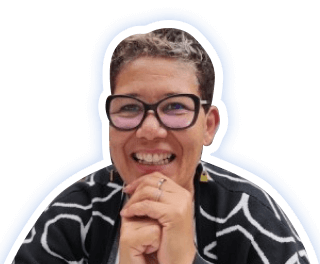

link to the source: The Art of Education University
Examining our learning towards different pedagogical approaches in the arts helps us to think about how to deal with assessment and recording of process work in both MYP and DP Arts. As Constructivism, the learning theory on which IB philosophy is founded, gradually gained momentum in schools, art teaching pedagogy followed suit. The theory of discipline-based art education (DBAE), originally proposed by the Getty Center for Education in the Arts in 1988 (Sacramento County Office of Education, Perspectives On Arts Education and Curriculum Design) proposes that art-making – the practical work – needs to be taught in combination with art criticism, history and contextual studies. This has become the founding pillar of most art curricula. The MYP visual arts course requires that we teach all these components in a holistic way so that students can work with their process collected into a portfolio (physical or digital). This feature is now automatically available on ManageBac. This in turn requires teachers to be expert assessors. We need to find and justify the evidence we use from across a spectrum of pieces of work. Our ‘backward planning by design’ needs to relate to our chosen pedagogy. Teachers working with a TAB or Waldorf-style classroom might not know what the outcome will be from the students, but they will have structured the process so that they can elicit the required evidence. This is where the journal function in ManageBac can be useful. Students have ownership of it and can authentically record their process as well as act upon feedback. It also provides a platform for recording teacher-student dialogue and, crucially, the students’ dialogue with their own art-making process. The holistic, portfolio approach of MYP assessment emphasises the ongoing nature of assessment and the importance of formative feedback. It lifts the focus on summative assessment to a more collaborative, ongoing process that facilitates student agency.
Previously, my team and I thought a lot about how best to capture the best and most appropriate work that goes into a student’s process journal in the Arts, in particular for the MYP e-portfolio, without interfering with the authentic process of using the journal itself. If students are allowed the creative freedom to use their sketchbooks for all of their artistic endeavours, editing it for the e-portfolio can become a time-consuming process! On the other hand, no teacher ever wants to shut down work that is generated by the student’s passion for the subject. This year I started using the journal function with my DP visual arts class. I ask them to upload the ‘highlights’ of their work. This supports their ability to ‘review, refine and reflect’, particularly when taking process photos of an exhibition piece.
My sense is the journal can help to capture some of the ephemeral evidence of art teaching and learning, particularly for MYP teachers who lean towards the ‘abundant choice’ end of the scale, which may otherwise be difficult to collect for assessment purposes.
For more help on facilitating journaling, you could recommend your students complete this IB provided nano course, Effective journaling in DP Arts.
If you are interested in having a conversation about The Arts, you can connect with me on MiniPD, and don’t forget to visit the Managebac Subject Pages for more information, there are separate pages for DP Visual Arts and MYP Arts.
The holistic, portfolio approach of MYP assessment emphasises the ongoing nature of assessment and the importance of formative feedback. It lifts the focus on summative assessment to a more collaborative, ongoing process that facilitates student agency.
Previously, my team and I thought a lot about how best to capture the best and most appropriate work that goes into a student’s process journal in the Arts, in particular for the MYP e-portfolio, without interfering with the authentic process of using the journal itself. If students are allowed the creative freedom to use their sketchbooks for all of their artistic endeavours, editing it for the e-portfolio can become a time-consuming process! On the other hand, no teacher ever wants to shut down work that is generated by the student’s passion for the subject. This year I started using the journal function with my DP visual arts class. I ask them to upload the ‘highlights’ of their work. This supports their ability to ‘review, refine and reflect’, particularly when taking process photos of an exhibition piece.
My sense is the journal can help to capture some of the ephemeral evidence of art teaching and learning, particularly for MYP teachers who lean towards the ‘abundant choice’ end of the scale, which may otherwise be difficult to collect for assessment purposes.
For more help on facilitating journaling, you could recommend your students complete this IB provided nano course, Effective journaling in DP Arts.
If you are interested in having a conversation about The Arts, you can connect with me on MiniPD, and don’t forget to visit the Managebac Subject Pages for more information, there are separate pages for DP Visual Arts and MYP Arts.About the Author

Like what you see? If you’re looking for a learning platform that is fully aligned to the IB curriculum, ManageBac is for you! Contact our team to discuss how we can support your school. Contact Sales
The Learning Management Digest
Subscribe today to receive our latest resources, events, updates and so much more – specially curated for you, and delivered straight to your inbox.
